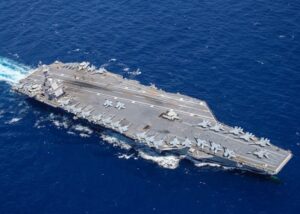
The Navy’s newest aircraft carrier, the first-in-class USS Gerald R. Ford (CVN-78), is set to deploy in a multinational coalition force in the Atlantic region on Oct. 3, the Navy said Sept. 29. This initial operational deployment will include air, maritime and ground assets from several NATO allies and two soon-to-be members. Gerald R. Ford Carrier Strike Group will sail from Norfolk, Va., and operate in the Atlantic Ocean. “The USS Gerald R. Ford Carrier Strike Group will deploy, integrating…

 By
By 











